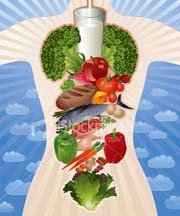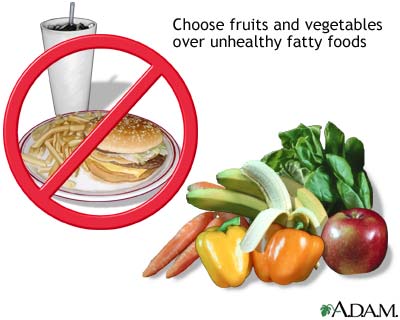THE ACIDIC / ALKALINE FOOD CHART
Acid and Alkaline Food.
The difference between happiness and health .. or sickness, depression and medical bills.
An acid body is a magnet for sickness, disease, cancer and aging. Eating more alkaline foods helps shift your body's pH and oxygenate your system. Alkaline foods keep your body healthy and functioning correctly, preventing cancer.
pH Balance:
The pH scale is from 0 to 14, with numbers below 7 acidic (low on oxygen) and numbers above 7 alkaline. The blood, lymph and cerebral spinal fluid in the human body are designed to be slightly alkaline at a pH of 7.4. At a pH slightly above 7.4 cancer cells become dormant and at pH 8.5 cancer cells will die while healthy cells will live.

Foods are generally categorized as acid or alkaline based on the residue they leave in the human body after they have been metabolized. Often there are fad diets that recommend people eat either all acid or all alkaline foods to solve one disease or another. In reality, it is probably healthier to strive for a balanced middle ground. A variety of health problems can occur when the body is either too alkaline or acidic. When the body fluids become too acidic, a condition called acidosis develops. Conversely, when the body fluids become too alkaline, alkalosis results.
Foods are determined to have either an alkaline or acid forming potential based on their pH values. (The word pH comes from the chemistry formula for calculating the concentration of hydrogen ions present in a substance. pH refers to the "power of Hydrogen.") A pH of 7 is neutral. Foods with an alkaline ash have pH values above 7. Foods with an acid ash have pH values below 7. Pure water has a neutral pH of 7.
In general most grains, dairy products, meats, seeds, legumes and nuts tend to have an acid ash. Most fruits and vegetables tend to have an alkaline ash. Cooked foods tend to be more alkaline than raw foods. Many holistic practitioners believe that modern Western diets are too acidic for good health due to a lack of fruits and vegetables. They often stress the importance of modifying one's diet to achieve a better acid-base balance.
Foods such as orange juice and lemon juice are acidic but turn alkaline after they have been metabolized in the body. As such, for dietetic purposes they are usually considered to be alkaline despite being acidic prior to consumption. Most fruits are alkaline except a few, including cranberries, plums and prunes, because they contain acids the body can't metabolize. Over acidity, which can become a dangerous condition that weakens all body systems, is very common today. It gives rise to an internal environment conducive to disease, as opposed to a pH-balanced environment which allows normal body function necessary for the body to resist disease. A healthy body maintains adequate alkaline reserves to meet emergency demands. When excess acids must be neutralized our alkaline reserves are depleted leaving the body in a weakened condition.
The following food and beverage chart indicates the associated alkaline or acid category.

|
ALKALINE / ACIDIC FOOD CHARTS
The charts below are provided for those trying to "adjust" their body pH through their diet. The pH scale is from 0 to 14, with numbers below 7 acidic (low on oxygen) and numbers above 7 alkaline. These charts are intended only as a general guide to alkalizing and acidifying foods. Note that there may be some discrepancies between foods included on these charts.*
|
|
ALKALINE FOODS
|
|
ACIDIC FOODS
|
ALKALIZING VEGETABLES
Alfalfa
Barley Grass
Beets
Beet Greens
Broccoli
Cabbage
Carrot
Cauliflower
Celery
Chard Greens
Chlorella
Collard Greens
Cucumber
Dandelions
Dulce
Edible Flowers
Eggplant
Fermented Veggies
Garlic
Green Beans
Green Peas
Kale
Kohlrabi
Lettuce
Mushrooms
Mustard Greens
Nightshade Veggies
Onions
Parsnips (high glycemic)
Peas
Peppers
Pumpkin
Radishes
Rutabaga
Sea Veggies
Spinach, green
Spirulina
Sprouts
Sweet Potatoes
Tomatoes
Watercress
Wheat Grass
Wild Greens
ALKALIZING ORIENTAL VEGETABLES
Maitake
Daikon
Dandelion Root
Shitake
Kombu
Reishi
Nori
Umeboshi
Wakame
ALKALIZING FRUITS
Apple
Apricot
Avocado
Banana (high glycemic)
Berries
Blackberries
Cantaloupe
Cherries, sour
Coconut, fresh
Currants
Dates, dried
Figs, dried
Grapes
Grapefruit*
Honeydew Melon
Lemon*
Lime*
Muskmelons
Nectarine*
Orange*
Peach
Pear
Pineapple
Raisins
Raspberries
Rhubarb
Strawberries
Tangerine*
Tomato
Tropical Fruits
Umeboshi Plums
Watermelon
*Although it might seem that citrus fruits would have an acidifying effect on the body, the citric acid they contain actually has an alkalinizing effect in the system.
ALKALIZING PROTEIN
Almonds
Chestnuts
Millet
Tempeh (fermented)
Tofu (fermented)
Whey Protein Powder
ALKALIZING SWEETENERS
Stevia
ALKALIZING SPICES & SEASONINGS
Cinnamon
Curry
Ginger
Mustard
Chili Pepper
Sea Salt
Miso
Tamari
All Herbs
ALKALIZING OTHER
Apple Cider Vinegar
Bee Pollen
Lecithin Granules
Molasses, blackstrap
Probiotic Cultures
Soured Dairy Products
Green Juices
Veggie Juices
Fresh Fruit Juice
Mineral Water
Alkaline Antioxidant Water
ALKALIZING MINERALS
Cesium: pH 14
Potassium: pH 14
Sodium: pH 14
Calcium: pH 12
Magnesium: pH 9
|
ACIDIFYING VEGETABLES
Corn
Lentils
Olives
Winter Squash
ACIDIFYING FRUITS
Blueberries
Canned or Glazed Fruits
Cranberries
Currants
Plums**
Prunes**
ACIDIFYING GRAINS, GRAIN PRODUCTS
Amaranth
Barley
Bran, wheat
Bran, oat
Corn
Cornstarch
Hemp Seed Flour
Kamut
Oats (rolled)
Oatmeal
Quinoa
Rice (all)
Rice Cakes
Rye
Spelt
Wheat
Wheat Germ
Noodles
Macaroni
Spaghetti
Bread
Crackers, soda
Flour, white
Flour, wheat
ACIDIFYING BEANS & LEGUMES
Black Beans
Chick Peas
Green Peas
Kidney Beans
Lentils
Pinto Beans
Red Beans
Soy Beans
Soy Milk
White Beans
Rice Milk
Almond Milk
ACIDIFYING DAIRY
Butter
Cheese
Cheese, Processed
Ice Cream
Ice Milk
ACIDIFYING NUTS & BUTTERS
Cashews
Legumes
Peanuts
Peanut Butter
Pecans
Tahini
Walnuts
ACIDIFYING ANIMAL PROTEIN
Bacon
Beef
Carp
Clams
Cod
Corned Beef
Fish
Haddock
Lamb
Lobster
Mussels
Organ Meats
Oyster
Pike
Pork
Rabbit
Salmon
Sardines
Sausage
Scallops
Shrimp
Scallops
Shellfish
Tuna
Turkey
Veal
Venison
ACIDIFYING FATS & OILS
Avacado Oil
Butter
Canola Oil
Corn Oil
Hemp Seed Oil
Flax Oil
Lard
Olive Oil
Safflower Oil
Sesame Oil
Sunflower Oil
ACIDIFYING SWEETENERS
Carob
Sugar
Corn Syrup
ACIDIFYING ALCOHOL
Beer
Spirits
Hard Liquor
Wine
ACIDIFYING OTHER FOODS
Catsup
Cocoa
Coffee
Vinegar
Mustard
Pepper
Soft Drinks
ACIDIFYING DRUGS & CHEMICALS
Aspirin
Chemicals
Drugs, Medicinal
Drugs, Psychedelic
Pesticides
Herbicides
Tobacco
ACIDIFYING
JUNK FOOD
Coca-Cola: pH 2
Beer: pH 2.5
Coffee: pH 4
** These foods leave an alkaline ash but have an acidifying effect on the body. |
|
|
|
|
|